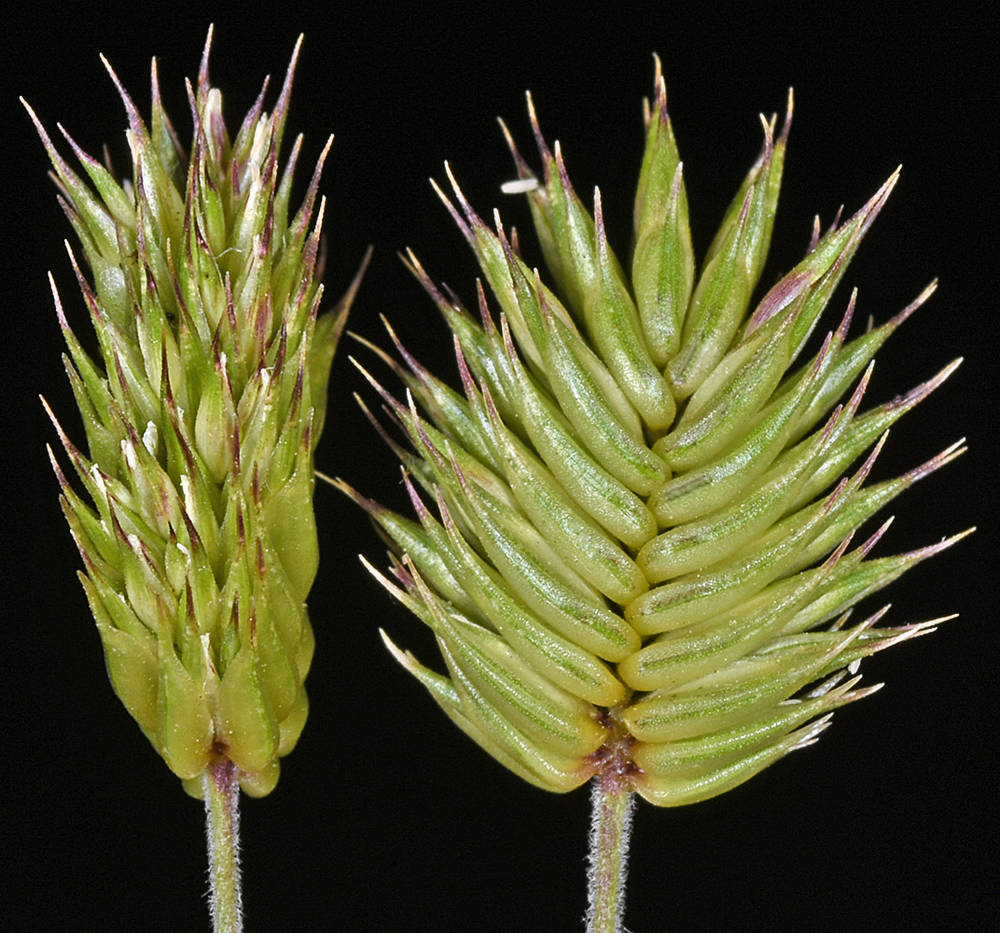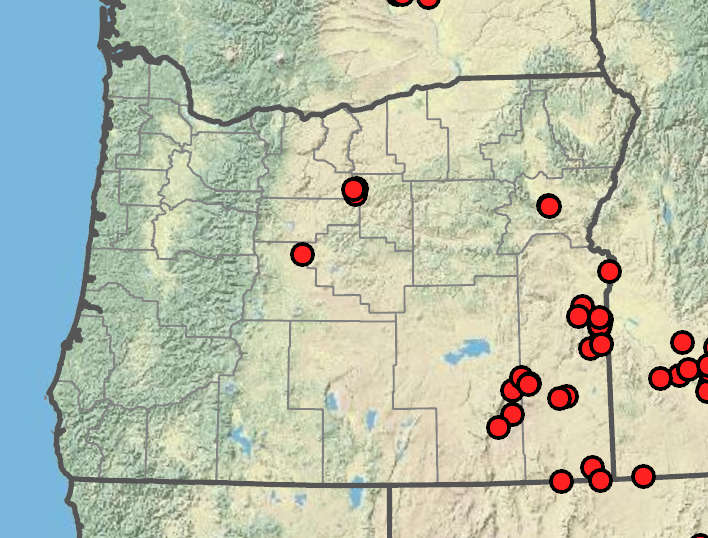Eremopyrum triticeum
Poaceae tribe Triticeae
annual wheatgrass
sheaths of lower leaves short pubescent, those of upper leaves inflated, glabrous;
blades 1–3(6) mm wide, scabrous or with short hairs distally.
1.3–2.4 × 0.8– 2 cm; ovoid or oblong;
spikelets crowded in 2 rows on opposite sides of the axis.
6–12 mm, 2–3 florets.
4–7.5 mm, 1-veined, strongly keeled.
5–7.5 mm, 5-veined; lowest lemma in each spikelet pubescent on lower half; the others glabrous to scabrous;
tip acute or acuminate to short-awned.
usually shorter and thinner than the lemmas; the 2 keels sometimes prolonged into tooth-like appendages.
0.4–1.3 mm.
Eremopyrum triticeum
Poaceae tribe Triticeae
Disturbed, often alkaline sites. 300–1800m. BR, BW, Lava, Owy. ID, NV, WA; north to British Columbia, northeast to Saskatchewan, southeast to NM. Exotic.
This low-growing annual wheatgrass has short, strongly flattened spikes that are a little longer than wide.
Barbara Wilson, Richard Brainerd, Nick Otting
- Local floras:
BC,
OR,
WA
- Local Web sites:
Flora NW,
PNW Herbaria
WildflowerSearch
iNaturalist (observations)
USDA Plants Database
- LBJ Wildflower Center
- SEINet
- Plants of the World Online
- Encyclopedia of Life
- Wikipedia
- Google Image Search



